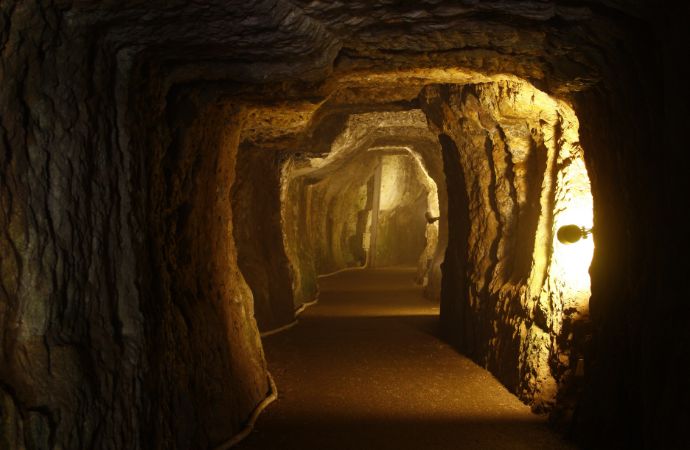
IWAMIGINZAN AREA SIGHTSEEING SPOTS
Surrounded by nature, "Ishigami Ginzan" is a popular spot as a World Heritage Site. The townscape is full of nostalgic atmosphere, and there are many photo spots.
The Izumo area is known as a spiritual sanctuary where the gods of Japan are said to convene. At its heart lies Izumo Oyashiro Shrine, one of Shimane’s most iconic and revered destinations, drawing countless visitors from across the country in search of meaningful connections and blessings. The area is also home to many historic shrines and temples, where ancient traditions and cultural heritage continue to thrive, offering a deep sense of history and spiritual presence. The sunset-themed story, “The Sacred Land of the Setting Sun – Izumo, Where the Gods Created the Sunset,” has been officially recognized as a Japan Heritage site.
SPOT - 01
Izumo Oyashiro Shrine
Izumo Oyashiro Shrine is famous for enshrining Ōkuninushi no Ōkami, the deity of matchmaking. According to tradition, during the month of Kamiarizuki (literally, "the month when the gods are present"), deities from all over Japan gather at this sacred site. They are said to hold a divine assembly called “Kamubakari”, where they discuss and form various kinds of connections—not only between men and women, but all types of relationships and bonds.
While most of Japan refers to this time as Kannazuki ("the month when the gods are absent"), the Izumo region uniquely calls it Kamiarizuki, reflecting the belief that all the gods are present here.
Every year, the shrine welcomes countless visitors seeking spiritual blessings, making it one of Japan’s most beloved destinations for those in search of meaningful connections.
The Main Hall (Honden) of Izumo Oyashiro Shrine is built in the Taisha-zukuri style—the oldest known architectural style for Shinto shrines in Japan—and is designated as a National Treasure, making it an exceptionally valuable cultural property.
According to shrine tradition, in ancient times the Main Hall stood at a towering 97 meters, and even in the medieval period, it was said to be 48 meters tall, twice the height of the current structure.
In 2000 (Heisei 12), a remarkable discovery lent support to these ancient accounts: a massive pillar base known as the "Uzubashira", measuring 3 meters in diameter, was unearthed within the shrine grounds—providing powerful evidence of the shrine’s legendary scale.
At the Kaguraden Hall, you’ll find Japan’s largest shimenawa—a sacred straw rope weighing approximately 5 tons.
About 600 meters south from the main approach to Izumo Oyashiro Shrine, you’ll also encounter Japan’s largest torii gate, a majestic structure that marks the entrance to this sacred site with awe-inspiring presence.
[Photo Captions] Top: Yatsukamon Gate Bottom Left: Kaguraden Hall Bottom Right: Shinmon-dōri Street
Spot Details ▶
Official Website ▶
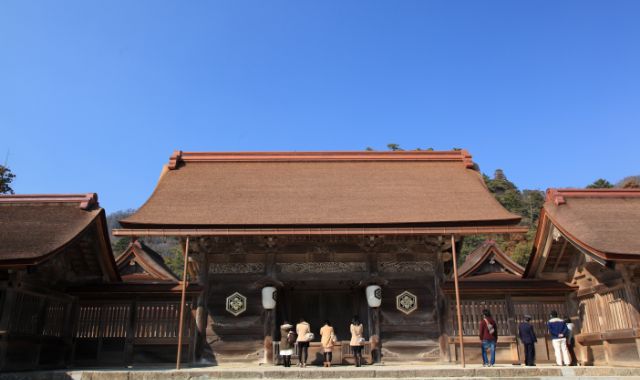


SPOT - 02
Shimane Museum of Ancient Izumo
The Shimane Museum of Ancient Izumo is a premier facility for exploring the deep history and mythology of the Izumo region.
Exhibits include a full-scale model of ancient Izumo Oyashiro Shrine, as well as excavated artifacts such as bronze swords, bronze bells (dōtaku), and magatama (curved jewels). A diorama recreating life during the era of the Izumo no Kuni Fudoki (an ancient record of the region) offers a vivid look into Japan’s early culture.
In addition to its extensive permanent exhibition, the museum regularly hosts special exhibitions, showcasing rare and valuable historical materials. It’s an ideal destination for those looking to deepen their understanding of Japan’s ancient spiritual and cultural heritage.
Inside the museum, you'll also find a panoramic café with a 180-degree view, where visitors can relax while gazing out at the sacred mountains said to be home to the gods.
Located right next to Izumo Oyashiro Shrine, the museum is a perfect place to visit before or after your shrine visit.
Spot Details ▶
Official Website ▶
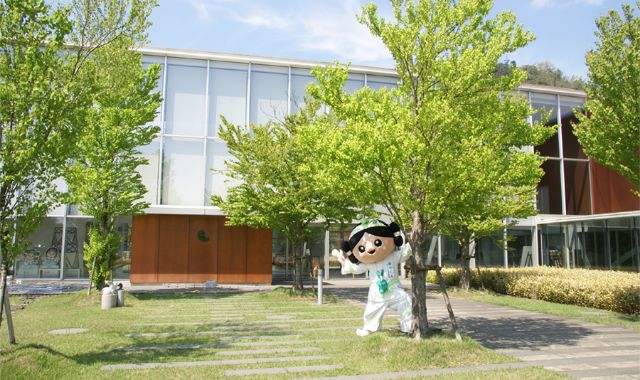
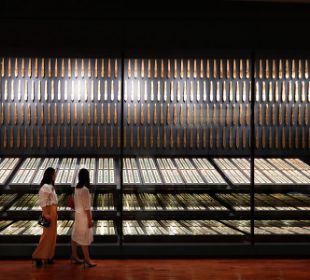

SPOT - 03
Inasa Beach
Inasa Beach lies to the west of Izumo Oyashiro Shrine and is considered a sacred shore where, on the 10th day of the 10th month of the lunar calendar, the eight million deities of Japan are ceremonially welcomed during Kamiarizuki. Closely associated with the myths of Kuniyuzuri (the transfer of land) and Kunibiki (land-pulling), this site is also known as a power spot. The small, prominent island just offshore is called Bentenjima, where Toyotamahiko-no-Mikoto, a deity of the sea, is enshrined. With the sun setting behind Bentenjima, the silhouette against the sea creates a breathtaking view. This iconic scene is recognized as a symbol of the Japan Heritage Story “The Sacred Land of the Setting Sun – Izumo”.
Spot Details ▶
Official Website ▶
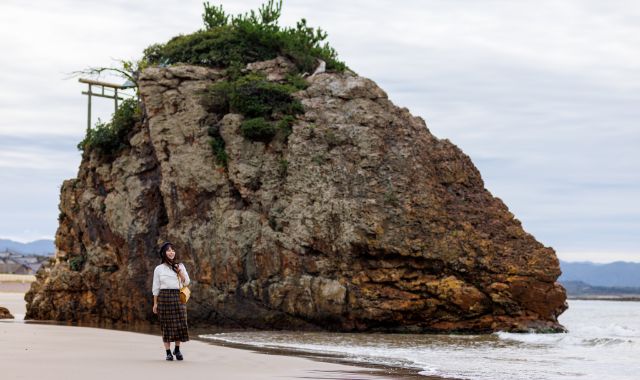
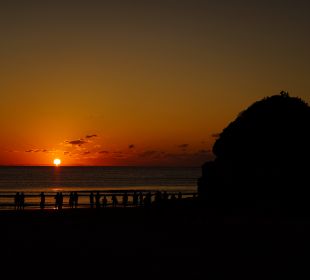
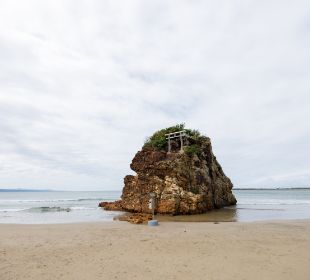
SPOT - 04
Izumo Hinomisaki Lighthouse
Hinomisaki is a scenic coastal area located at the western tip of the Shimane Peninsula, overlooking the Sea of Japan. It is part of the Daisen-Oki National Park, offering visitors spectacular views and a rich natural environment.
Just offshore to the south lies Kyojima Island, home to the Kyojima Black-tailed Gull Breeding Grounds, which are designated as a National Natural Monument.
The coastal road stretching about 9 kilometers from Izumo Oyashiro Shrine to Hinomisaki is lined with rugged cliffs and dramatic rock formations, making it a perfect route for a scenic drive.
Standing on the cape is the Izumo Hinomisaki Lighthouse, which boasts the tallest height among stone-built lighthouses in Japan. Its white structure contrasts beautifully with the blue sky.
As a lighthouse open to visitors, it is possible to climb to the top and tour inside. From the top, you can enjoy a 360-degree view of the sea and sky stretching far into the distance.
Near the Hinomisaki parking area, a row of shops offers a variety of local treats such as grilled squid and soft-serve ice cream in many flavors. Depending on the season, you can also find dried flatfish (karei) and blackthroat seaperch (nodoguro) for sale.
The local restaurants are another highlight, serving dishes made with plenty of fresh seafood from the nearby Sea of Japan.
Spot Details ▶
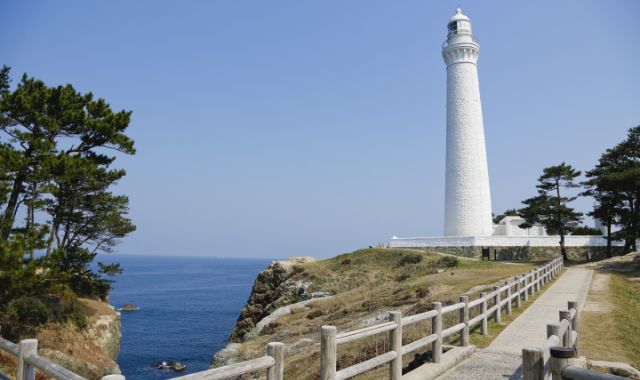

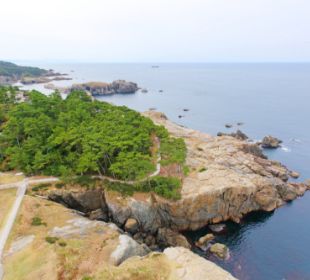
SPOT - 05
Susa Shrine
Susa Shrine enshrines Susanoo-no-Mikoto, the legendary deity known for slaying the fearsome Yamata-no-Orochi.
Featured in TV programs and magazines, the shrine has gained attention as one of Japan’s most powerful spiritual spots.
Alongside Izumo Oyashiro Shrine, it is also revered as a deity of matchmaking, drawing many visitors who come in search of meaningful connections and spiritual blessings.
Behind the main hall stands a towering giant cedar tree estimated to be around 1,200 years old, enveloping the area with its powerful life force and sacred atmosphere.
Susa Shrine is known for its Seven Mysteries, one of which is the “Shionoi” (Salt Well). According to legend, Susanoo-no-Mikoto drew saltwater here to purify the land.
The spring water is a mildly alkaline saline mineral spring containing Glauber's salt, and it is said to be beneficial for diabetes, chronic rheumatism, and other ailments.
Spot Details ▶
Official Website ▶
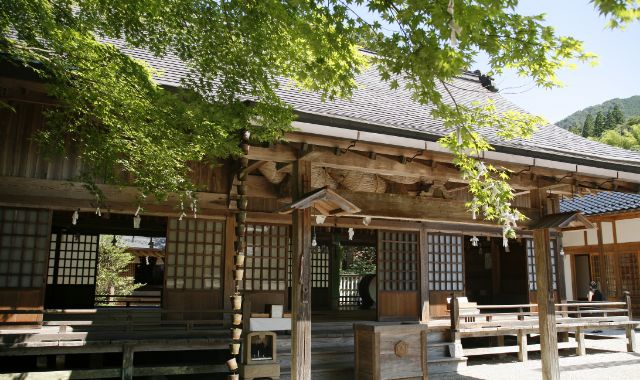
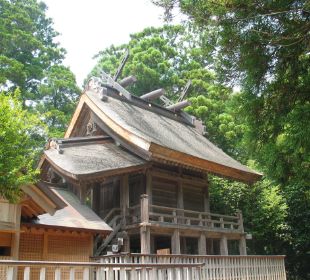
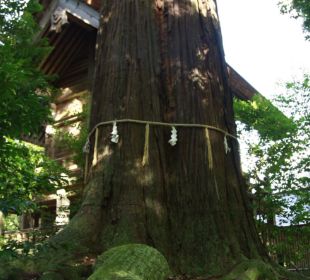
SPOT - 06
Shimane Nature Museum of Lake Shinji – Gobius
Gobius introduces a wide variety of freshwater and brackish water creatures that inhabit Shimane Prefecture's rivers and lakes.
The surrounding area is part of the Shinjiko Nature Land, which includes facilities such as a bird-watching hut, biotope pond, Shinjiko Green Park, and picnic plaza. It’s a great place for both children and adults to enjoy observing wildlife, taking leisurely walks, and learning about the local natural environment in a fun and engaging way.
Inside, the museum features a river diorama over 20 meters long, showcasing a wide range of aquatic species. Peering into the “helmet tank” gives visitors the sensation of being underwater.
The touch pool is a favorite among children, where they can catch and observe creatures like American crayfish, pond snails, mud crabs, and loaches.
The museum also exhibits the rare and protected Japanese giant salamander, and regularly hosts unique special exhibitions that offer new discoveries with every visit.
Spot Details ▶
Official Website ▶
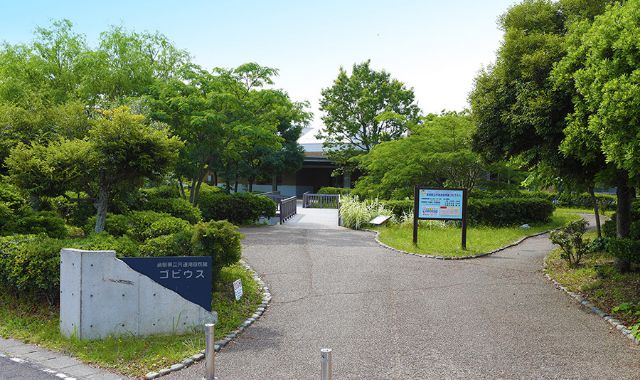
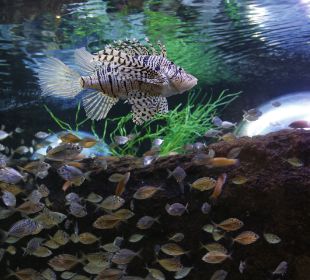
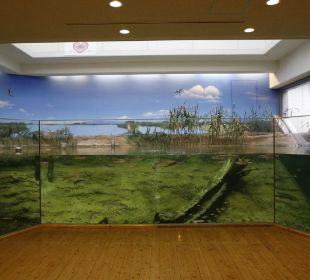
SPOT - 07
Roadside Station Kirara Taki
With its stylish exterior, Roadside Station Kirara Taki catches the eye of passing travelers.
Behind the building lies Kirara Beach, offering beautiful ocean views and drawing many beachgoers during the summer season.
Inside the facility, you'll find a variety of local specialties for sale, including seafood takoyaki, ice cream and cream puffs made with Takicho’s famous figs, and other souvenir items featuring local ingredients.
Next door is the popular Kirara Bakery, known for its freshly baked, fluffy breads that keep visitors coming back for more.
Nearby, you’ll find Kirara Cottages and log houses offering accommodation with sweeping views of the Sea of Japan, making it a great place to stay and relax by the coast.
Also located nearby is Ichijiku Onsen, a natural hot spring with free-flowing water from the source. Guests can enjoy a rotenburo (open-air bath) and a unique herbal bath infused with fig leaves, offering a relaxing and rejuvenating experience.
Spot Details ▶
Official Website ▶
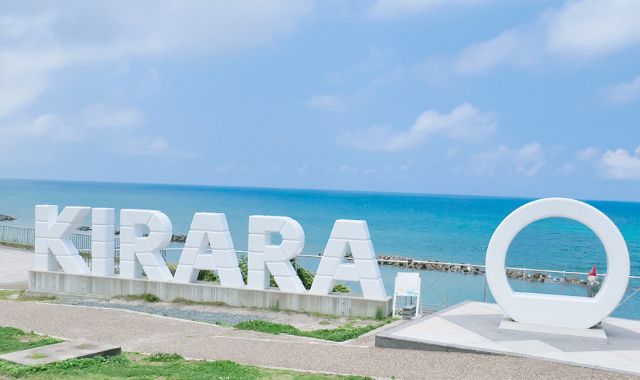
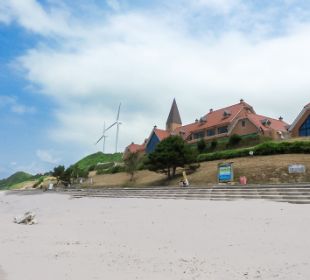
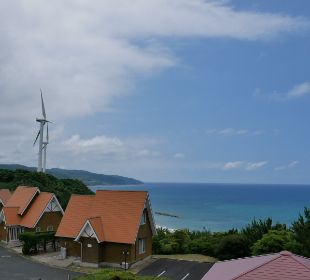
SPOT - 08
Momen Kaidō (Cotton Road)
Located between Lake Shinji and the Sea of Japan, Unshū-Hirata is a region blessed with abundant nature—sea, mountains, lakes, and rivers.
It was once famous for its thriving cotton cultivation, with production beginning in the early 1700s. By the latter half of the Edo period, cotton from this area was being exported to other regions, gaining a strong reputation.
Thanks to the domain’s strict quality control, Mitsui merchants from Osaka were even sent to purchase the cotton, which became highly valued in the Kansai region under the name "Unshū Momen" (Unshū cotton).
In the Meiji era, the region shifted from cotton to silk production, leading to the establishment of spinning mills and its growth into an industrial town. As commerce flourished, the area became a bustling merchant district, and the population grew significantly.
Along the old road, you'll find rows of traditional buildings featuring the kirizuma-tsuma-iri nuriya-zukuri style—narrow-fronted, deep houses with gable-end entrances and plastered facades, as well as white-walled storehouses (dozō).
Though the exteriors may appear modest at first glance, many homes reveal a sense of former prosperity through their carefully selected timber, fine plasterwork, sliding screen paintings, and refined interiors.
As you stroll through the town, you’ll notice traditional elements such as "sazanka-gawara" (left-ridged roof tiles), "namako-kabe" (sea cucumber walls), and rows of lattice-windowed machiya townhouses, all of which still remain.
Long-established shops like sake breweries, soy sauce makers, and wagashi (Japanese sweets) shops continue to preserve their traditional flavors and techniques.
Today, Momen Kaidō has become a rare and charming place where the historical townscape blends naturally with modern-day life, offering a serene and timeless atmosphere.
Spot Details ▶
Official Website ▶
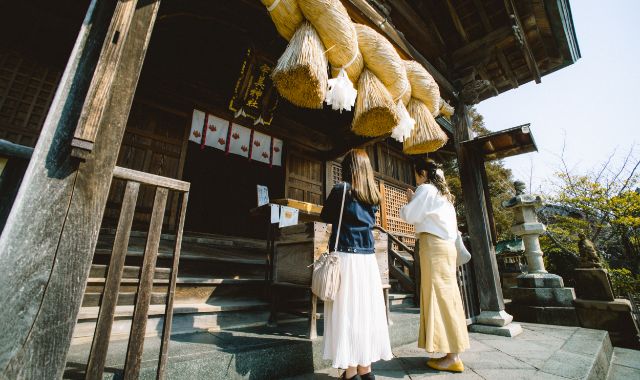
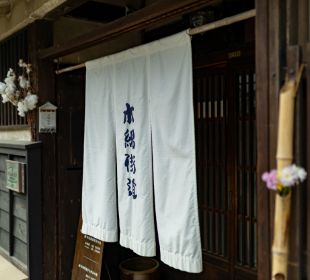
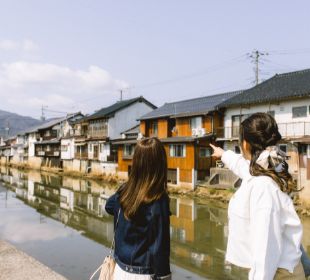
Copyright Shimane Prefectural Government and Shimane Tourism Federation All Rights Reserved.
Return to Shimane Home>>

Surrounded by nature, "Ishigami Ginzan" is a popular spot as a World Heritage Site. The townscape is full of nostalgic atmosphere, and there are many photo spots.
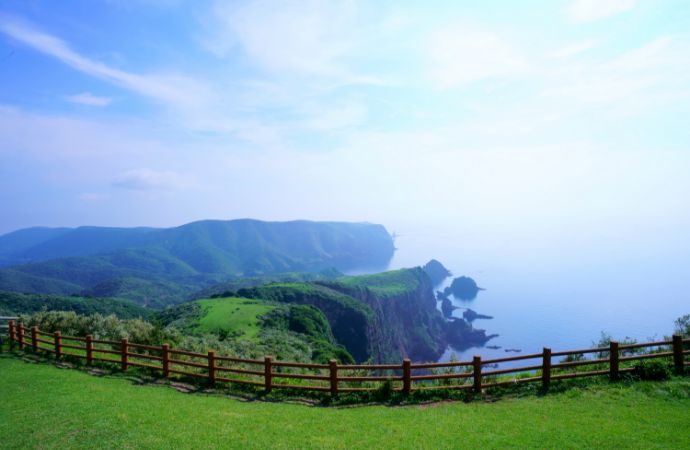
The Oki area, where you can experience the charm of the UNESCO World Geopark. There are many attractions to see, such as Kunigakashore, Lussuk Island, Yaosugisugi/Mudsutsugi, and the waterfall of Tantoscope.
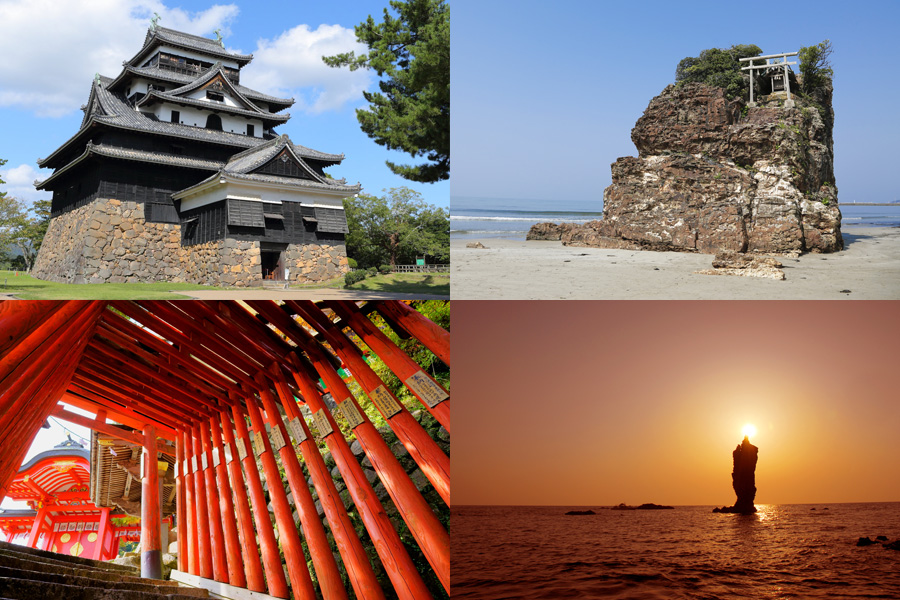
島根と言えば縁結びの最強スポット「出雲大社」や世界遺産「石見銀山」が特に有名ですが、国宝「松江城」、庭園ランキング日本一「足立美術館」や山陰の小京都「津和野」、さらにはユネスコ世界
This website uses cookies so that we can provide you with the best user experience possible. Cookie information is stored in your browser and performs functions such as recognising you when you return to our website and helping our team to understand which sections of the website you find most interesting and useful.
Strictly Necessary Cookie should be enabled at all times so that we can save your preferences for cookie settings.
If you disable this cookie, we will not be able to save your preferences. This means that every time you visit this website you will need to enable or disable cookies again.
